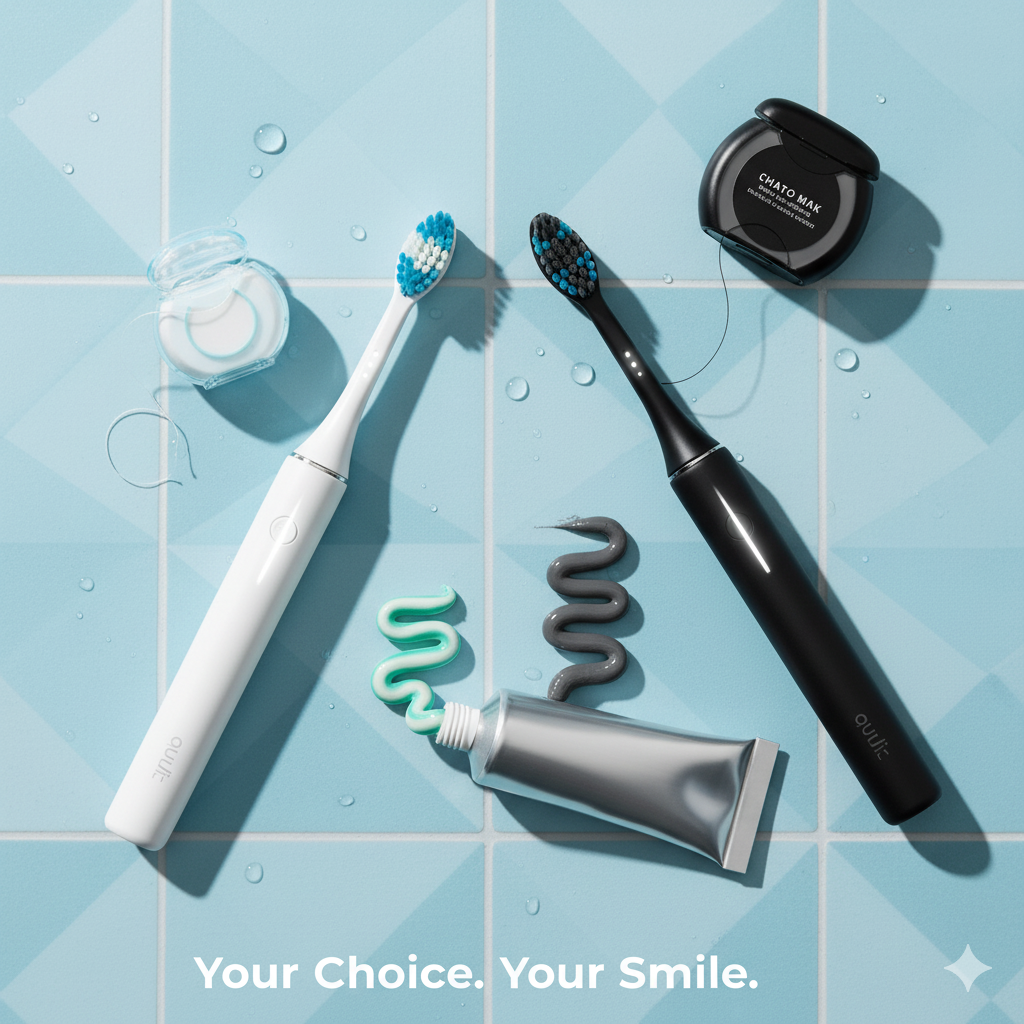1) Start with the bristles — soft wins for most
Soft bristles flex into the gumline to remove plaque without abrading enamel. Medium or hard bristles increase the risk of gum recession and sensitivity. If you brush aggressively, pick a brush with a pressure sensor or a flexible neck.
2) Head size & handle design
- Choose a small–medium head to access molars easily.
- Non-slip, ergonomic handle improves control.
- A back-of-head tongue cleaner is a useful bonus.
3) Manual vs electric toothbrush
Manual
- Affordable and widely available
- Works well if your technique is excellent
Electric (oscillating or sonic)
- Built-in 2-minute timers & pressure sensors
- Helpful for braces, implants, limited dexterity
We often recommend a quality electric brush for consistency—especially during orthodontic treatment.
4) Which toothpaste should you choose?
- Fluoride: 1000–1500 ppm for adults; smear for under-3s, pea-sized for ages 3–6.
- Sensitivity: stannous fluoride or potassium nitrate.
- Whitening: avoid high abrasivity if you have recession/sensitivity.
- Tartar control: use under professional guidance.
5) Special cases: braces, aligners & implants
- Braces: orthodontic heads + interdental brushes under the wire.
- Aligners: brush before reinserting trays; clean trays with cool water.
- Implants: clean around implant crowns with super-floss or soft interdental brushes.
6) Replace your brush on time
Every 3 months, or sooner if bristles splay. Replace immediately after colds or flu to avoid reinfection.
Bottom line: A soft-bristle, small-headed brush used for two minutes twice daily with fluoride toothpaste is the safest choice for most people. Tools help, but technique wins.
Need personalised advice?
Our orthodontist-led team in Lucknow can help you choose the perfect routine.
